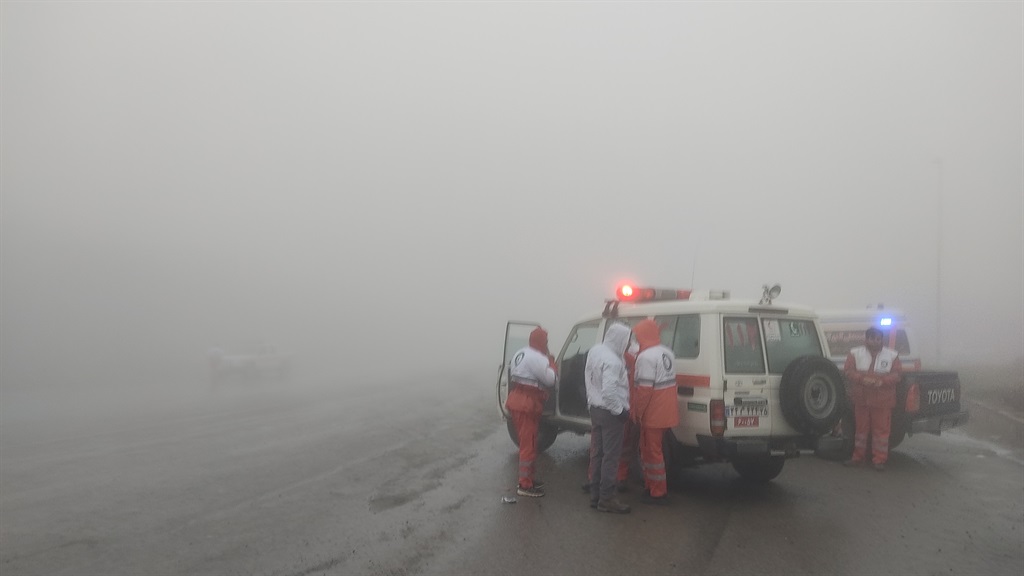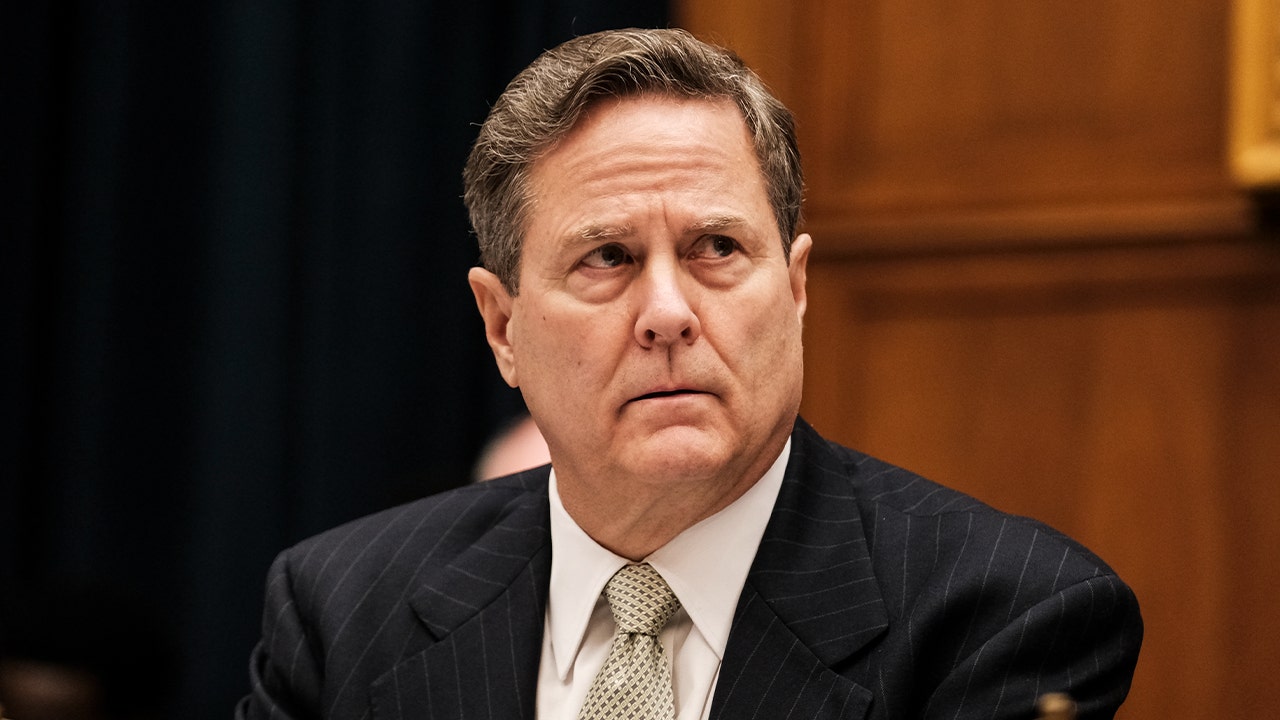Rescuers gather before heading towards the site of the “accident” involving a helicopter in the convoy of Iran’s President in the Jolfa region of the western province of East Azerbaijan. (AZIN HAGHIGHI / MojNews / AFP)
- Iranians prayed and speculated as the search continued for President Ebrahim Raisi and foreign minister Hossein Amir-Abdollahian.
- On Sunday night the country was glued to images of rescue teams using dogs and drones to search in dense fog.
- The helicopter carrying Raisi went down in a remote area, shortly after mass internal protests and a near war with Israel.
Fear and worry weighed on Iran Sunday as the Islamic republic waited for news on the fate of President Ebrahim Raisi after his helicopter went missing in a foggy mountain area.
Thousands of Muslim faithful prayed for his safe return in mosques nationwide — including amid the minarets of 63-year-old Raisi’s hometown, the shrine city of Mashhad.
Tearful Iranians fearing the worst were also praying for Raisi and foreign minister Hossein Amir-Abdollahian, who was with him on the helicopter, in Valiasr Square in central Tehran.
READ | Helicopter carrying Iran’s President Raisi crashes in mountains, official says
Iran has endured years of tensions and turmoil, most recently coming to the brink of war with arch enemy Israel in a series of tit-for-tat attacks sparked by the Gaza war.
In recent times it has been shaken by waves of mass protests, while its people have endured economic pain deepened by US sanctions over its contested nuclear programme.
Supreme leader Ayatollah Ali Khamenei took to the airwaves to comfort the nation, urging Iranians to “not worry” about the leadership of the Islamic republic, saying “there will be no disruption in the country’s work”.
One Teheran citizen, a 29-year-old journalist who only gave her name as Vakili, said she “feared” the worst and said it recalled previous tense moments in recent years.
“I hope they are okay and that they are found,” she said as a massive search effort continued for Raisi and other aboard in the mist-shrouded hills of East Azerbaijian province.
“It’s a strange feeling, like we felt before with Haj Qasem Soleimani,” she said, referring to revered Revolutionary Guards commander who was killed in a 2020 US drone strike in Baghdad.
Expressions of concern and offers to help the search effort poured in from regional powers, including Iran’s regional rival Saudi Arabia.
While US President Joe Biden was briefed on the situation, the European Union activated its mapping programme to help in the effort to find the helicopter.
“I am deeply saddened,” said another resident of the capital, a private sector employee named Hadi. “We hope that he (Raisi) and his companions are found in good health.”
The helicopter suffered an accident as Raisi was heading to northern city of Tabriz after he inaugurated a dam project on the border with Azerbaijan, state media said.
The presidential convoy included three helicopters, of which two landed safely but one vanished.
Poor weather conditions complicated communication with the helicopter carrying Raisi and other officials.
State media soon reported “an accident” over the province’s Jolfa region, while some officials referred to a “hard landing”.
Iranians were glued to TV screens and their smartphones for updates, as footage showed rescue teams moving up a slope through dense fog and drizzling rain, using dogs and drones.
Military personnel along with the Revolutionary Guards and police had also deployed teams to the area, said army chief-of-staff Mohammad Bagheri.
As the nation waited, Interior Minister Ahmad Vahidi said rescue teams were dealing with a “steep and forested slope” where “visibility is very limited”.
“The rescue forces unfortunately have yet to reach the desired point,” he was quoted by Tasnim news agency as saying.
“We hope that with prayers of the dear people we reach the accident site as soon as possible.”
Rumours and speculation quickly swirled around social media in Iran over the fate of Raisi and his companions.
Vahidi urged Iranians not to trust information relayed by channels hostile to the Islamic Republic and to get their information “from state television only.”




















Discussion about this post